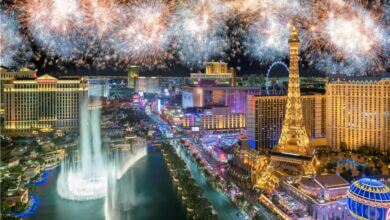The 10 Best Harry Potter Things to Do in London 2025

Explore the top Harry Potter things to do in London, from secret potions classes to mysterious walking tours, and discover the city through the eyes of the world’s most famous wizard.
Harry Potter’s London Tours
[table “24” not found /]10 Best Harry Potter Things to Do in London
- Warner Bros. Studio Tour London – The Making of Harry Potter
- Magical London: Harry Potter Guided Walking Tour
- Harry Potter Walking Tour for Muggles in London
- London: Warner Bros. Studio Tour with Return Transportation
- Harry Potter Walking Tour with Platform 9 ¾
- Harry Potter and Wizarding World Sightseeing Tour
- Original Harry Potter Locations Tour – London
- Harry Potter Walking Tour and River Thames Cruise
- Interactive Harry Potter Walking Tour
- London: Harry Potter Movies Walking Tour (Kids Go Free)
Harry Potter Tours in London
1. Warner Bros. Studio Tour London – The Making of Harry Potter

- Location: Starts at Euston War Memorial
- Tour Start Time: Varies, typically morning 11:05 AM and afternoon 12:05 PM
- Tour Length: Approximately 9 hours (including travel time from London to Warner Bros Studio)
- Why I Like This Tour: It’s all-inclusive! It includes transport, admission, and a personalized tour into the magical world where you can see how the movies were made, with access to real sets and props.
- Tour Guide Hints: Wear comfortable shoes, as there will be a lot of walking.
- Link: Warner Bros. Studio Tour London – The Making of Harry Potter
- One of the quintessential “Harry Potter things to do in London,” this studio tour offers a London-to-London immersive experience into the Harry Potter series filmmaking process.
2. Magical London: Harry Potter Guided Walking Tour
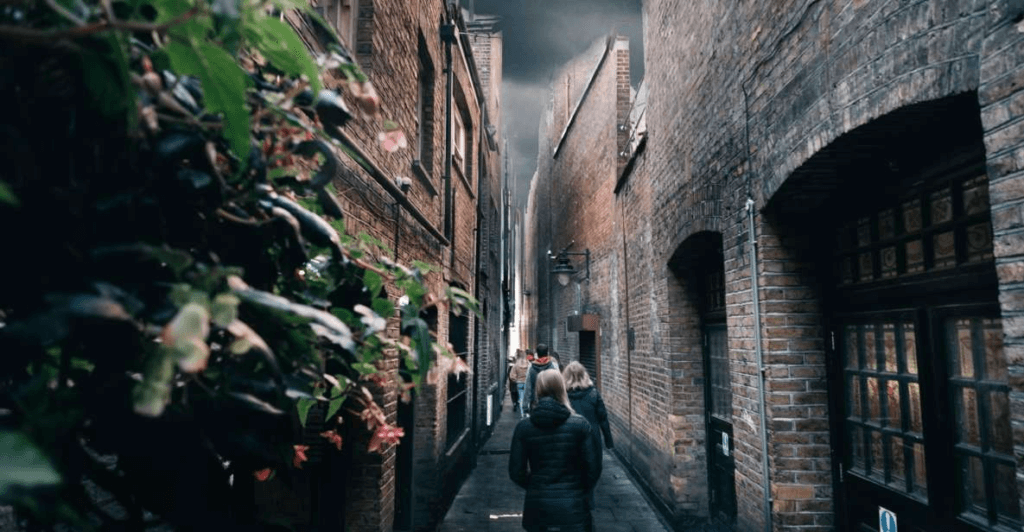
- Location: Starts at Southwark View Point
- Tour Start Time: Varies; 10:30 AM, 2:30 AM, and 7:00 PM are popular options.
- Tour Length: 2.5 hours
- Why I Like This Tour: It covers key locations in London that inspired the Harry Potter films and books. It’s perfect for seeing how London influenced J.K. Rowling’s writing.
- Tour Guide Hints: This tour involves significant walking, so comfortable footwear is recommended. Keep your camera ready for quick photo opportunities.
- Link: Magical London Walking Tour
- Explore various “Harry Potter things to do in London” with this guided walking tour that brings you to the magical sites around the city.
3. Harry Potter Walking Tour for Muggles in London

- Location: Starts at Leadenhall Market
- Tour Start Time: Multiple times throughout the day
- Tour Length: Approximately 2 hours
- Why I Like This Tour: It’s interactive and perfect for families. It provides a detailed exploration of the Harry Potter universe within the context of London.
- Tour Guide Hints: Check the weather forecast, as London can be rainy, and bring an umbrella or suitable rain gear just in case.
- Link: Harry Potter Walking Tour for Muggles
- This tour is an excellent addition to the “Harry Potter things to do in London,” offering fans a chance to see the city through the eyes of their favorite characters.
4. London: Warner Bros. Studio Tour with Return Transportation

- Location: Starts at 38-51 Bedford Way, London
- Tour Start Time: Various times during the day
- Tour Length: 7 hours (London to London)
- Why I Like This Tour: The convenience of return transportation from London allows for a seamless experience of the magic of Harry Potter.
- Tour Guide Hints: Ensure you are on time to catch the bus, then relax and enjoy this hassle-free Harry Potter experience.
- Link: London: Warner Bros. Studio Tour with Return Transportation
- Step into the wizarding world of Harry Potter at Warner Bros. Studio Tour London. Explore authentic sets like the Great Hall, learn the secrets behind the scenes, and discover how the magical series was brought to life.
5. Harry Potter Walking Tour with Platform 9 ¾

- Location: Starts at Clermont Hotel, Charing Cross on the Strand.
- Tour Start Time: Morning
- Tour Length: 3 hours
- Why I Like This Tour: It includes the iconic Platform 9 ¾ photo op, a dream come true for any Harry Potter fan, making it a memorable part of visiting London.
- Tour Guide Hints: The Platform 9 ¾ photo spot can get crowded; patience is key! Consider shopping at the Harry Potter store nearby while waiting.
- Link: Harry Potter Platform 9 ¾ Tour
- This tour is a must for your “Harry Potter things to do in London.” It offers a chance to interact directly with one of the most famous locations in the Harry Potter universe.
6. Harry Potter and Wizarding World Sightseeing Tour
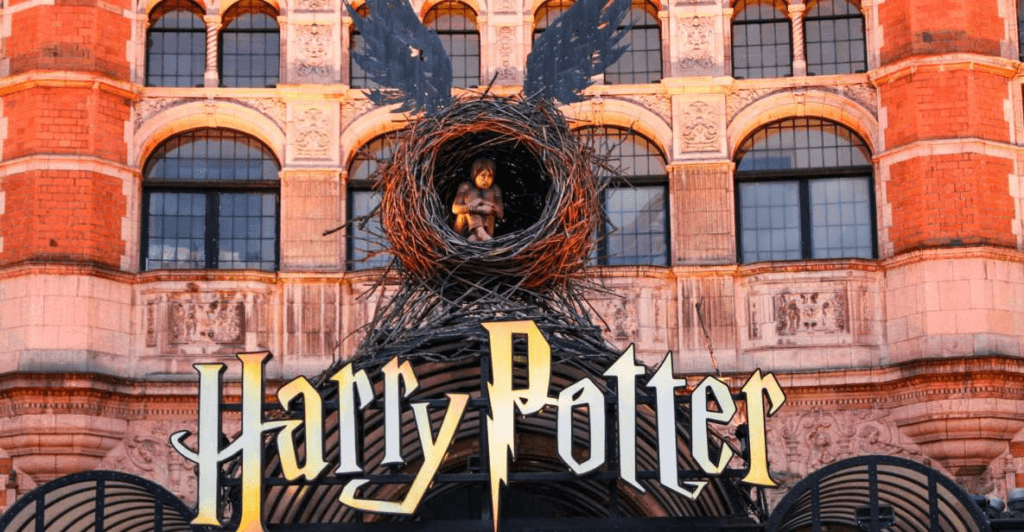
- Location: Starts at London Bridge Post Office
- Tour Start Time: Early afternoon, typically 2:00 PM
- Tour Length: Approximately 2 hours
- Why I Like This Tour: This tour gives a comprehensive view of both the film locations and the real places that inspired the books. It’s great for understanding the full Harry Potter story within London.
- Tour Guide Hints: Some parts of this tour might require a brief use of the London Underground, so having an Oyster card or contactless payment method is handy.
- Link: Harry Potter Sightseeing Tour
- A perfect activity for exploring “Harry Potter things to do in London,” this tour explores the real and fictional worlds that shape the Harry Potter series.
7. Original Harry Potter Locations Tour – London

- Location: Starts at Southwark View Point London SE1 9DF, UK
- Tour Start Time: Morning
- Tour Length: 2 hours
- Why I Like This Tour: This tour is perfect for Harry Potter fans. It offers engaging trivia, iconic filming sites, and a fun Hogwarts house sorting experience.
- Tour Guide Hints: Wear comfortable shoes, bring a camera, and be prepared for fun quizzes and interactive games throughout the tour.
- Link: Original Harry Potter Locations Tour – London
- Join an immersive Harry Potter walking tour, explore iconic London filming sites, take quizzes, and get sorted into your Hogwarts house with a professional guide.
8. Harry Potter Walking Tour and River Thames Cruise
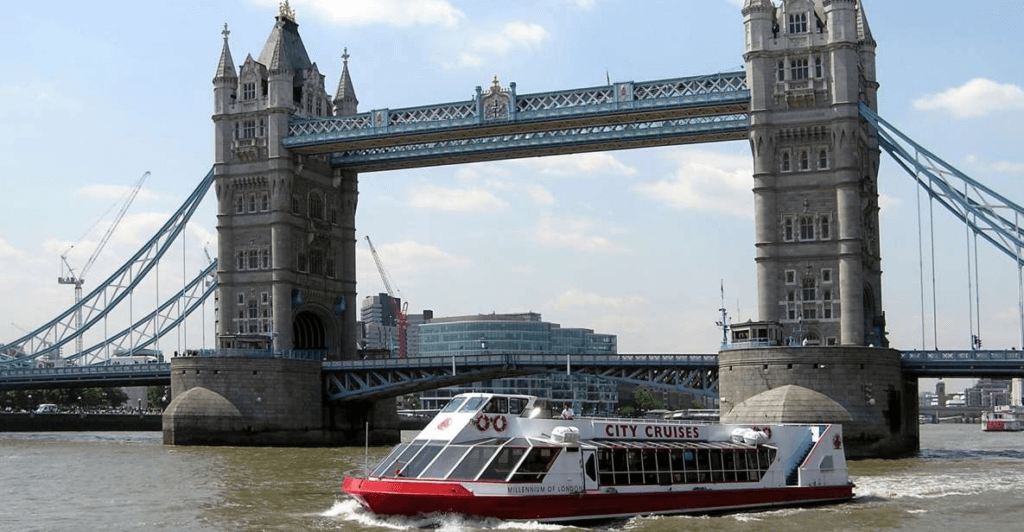
- Location: Starts at The Harry Potter Shop at Platform 9 ¾
- Tour Start Time: Varies, typically afternoon
- Tour Length: 5 hours
- Why I Like This Tour: Including a River Thames cruise offers a unique perspective of London’s famous landmarks connected to the Harry Potter series, offering a fresh look at the magical landscape.
- Tour Guide Hints: Dress in layers as the Thames can be breezy. If prone to seasickness, position yourself near the middle of the boat where motion is minimal.
- Link: Harry Potter Tour and Thames Cruise
- Combining a cruise and walking tour, this is one of the more unique “Harry Potter things to do in London,” ideal for those looking to see the magical sites from both land and water.
9. Interactive Harry Potter Walking Tour

- Location: Starts at Palace Theatre London
- Tour Start Time: 10:00 AM
- Tour Length: Approximately 2.5 hours
- Why I Like This Tour: This tour features interactive quizzes and activities that make exploring Harry Potter sites more engaging. It’s especially fun for groups or families.
- Tour Guide Hints: Be ready for quick quizzes and interactive games. Participating actively will enhance your tour experience significantly.
- Link: Interactive Harry Potter Walking Tour
- With its interactive components, this tour is a lively choice among “Harry Potter things to do in London,” ensuring participants are not just observers but active participants in the magical history.
10. London: Harry Potter Movies Walking Tour (Kids Go Free)

- Location: Starts at The Parcel Yard, King’s Cross
- Tour Start Time: Various times daily
- Tour Length: Approximately 3 hours
- Why I Like This Tour: Led by knowledgeable and entertaining guides, this tour offers an in-depth look at London’s famous and lesser-known Harry Potter film sites.
- Tour Guide Hints: Listen carefully to the guide’s stories and hidden location details. They often share lesser-known facts that enrich the experience.
- Link: London: Harry Potter Movies Walking Tour
- Explore over 10 filming locations and various sites that inspired J.K. Rowling’s iconic Harry Potter series on a small group or private walking tour of London.
Harry Potter Things to Do in London: All You Need to Know

Transportation and Visits to Harry Potter Studios
Best Way to Visit Harry Potter Studios from London
The ideal approach for visiting the Harry Potter Studios from London is to take the dedicated shuttle buses from Watford Junction, easily accessible via a short train ride from London Euston. This method offers a direct and hassle-free connection to the magic of the studios.
Cheapest Way to Get to Harry Potter Studios from London
For budget-conscious travelers, the most affordable option is to use public transportation. Take a train from London Euston to Watford Junction and a quick shuttle bus ride directly to the studios. Booking tickets in advance can often secure lower fares.
How to Get from London to Harry Potter Studios
You can travel from London to the Harry Potter Studios by taking a train from London Euston to Watford Junction and then catching the shuttle bus to the studios. This route is efficient and well-signposted, making it straightforward for visitors.
What is the Best Day of the Week to Visit Harry Potter Studios London?
Visiting the studios on a weekday, particularly from Tuesday to Thursday, can help avoid the larger crowds typically found during weekends, enhancing the overall experience with shorter lines and less congestion.
How Long Should You Spend at Harry Potter World London?
A visit to Harry Potter World London warrants at least half a day, as there are numerous exhibits and attractions to explore. However, true enthusiasts might find that a full day allows for a more leisurely and thorough experience.

Harry Potter Tours and Attractions in London
Harry Potter Tours in London London offers a variety of Harry Potter-themed tours, ranging from guided walking tours that explore film locations to bus tours that cover broader areas, providing fans with numerous ways to immerse themselves in the magical world.
Best Harry Potter Tours in London The most comprehensive and enjoyable tours include the “Magical London: Harry Potter Guided Walking Tour” and the “Harry Potter Film Location Bus Tour,” offering unique insights into the settings from the films and books.
Harry Potter Walking Tour for Muggles in London This popular tour caters specifically to Harry Potter fans. It takes participants on a journey through various iconic locations from the movies and offers trivia and stories that enhance the magical experience.
Harry Potter Attractions in London Permanent attractions such as the House of MinaLima, which exhibits graphic art from the Harry Potter films, and the Platform 9 ¾ section at King’s Cross Station are must-visit spots for fans visiting London.

Specific Harry Potter Experiences
Iconic Harry Potter Sites in London Notable sites include Platform 9 ¾, where you can take a memorable photo, and the Leaky Cauldron, identified with various historical pubs around the city, offering a tangible connection to the magical world of Harry Potter.
Harry Potter 9 3/4 Sign The famous sign and trolley at King’s Cross Station offer one of the most iconic photo opportunities for Harry Potter fans, symbolizing the gateway to the wizarding world.
Butterbeer at Harry Potter World London No visit would be complete without trying Butterbeer, a favorite among fans. It is available at the Warner Bros. Studio Tour, providing a taste of the wizarding world’s famous drink.
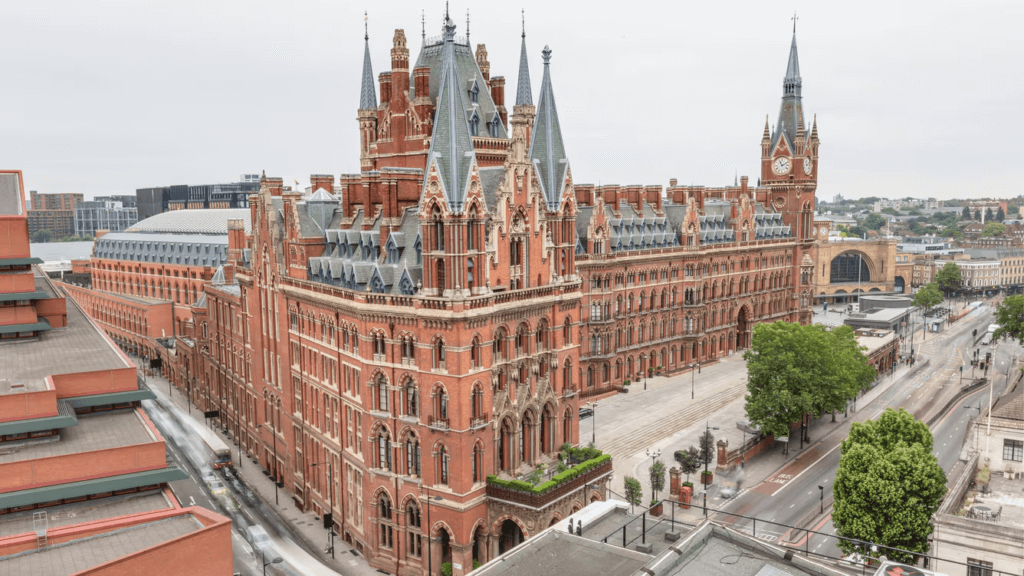
Accommodations Themed Around Harry Potter
Harry Potter Hotels in London
For an immersive overnight experience, London offers several hotels with Harry Potter-themed rooms, perfect for fans looking to extend the magic beyond the day’s adventures.
These specially designed accommodations often feature décor inspired by the Hogwarts Houses or other elements from the wizarding world. Notable among them:
- The Georgian House Hotel – This Victorian hotel offers the “Wizard Chambers” and “Enchanted Chambers,” which transport guests into a magical world with Gothic details, cauldrons, and four-poster beds shrouded in velvet.
- The Wizard Chambers at the Cauldrons – Located near Covent Garden, this boutique hotel offers a unique stay. Its rooms replicate a Hogwarts dormitory’s cozy, magical ambiance, complete with potion bottles and cauldrons.
- St. Pancras Renaissance Hotel London – Nestled in the iconic St. Pancras International Station, this hotel merges Victorian elegance with modern amenities, offering a magical setting reminiscent of a Hogwarts castle. Its opulent rooms and exceptional service make it a perfect haven for those exploring Harry Potter in London.
Each of these hotels provides a unique experience, combining luxury with the enchantment of Harry Potter, making them ideal for fans seeking a magical stay in London.
Merchandise and Collectibles
Harry Potter Merchandise in London Fans can purchase a wide range of Harry Potter merchandise, from wands and robes to collectible items, at various themed shops throughout London, including the famous Platform 9 ¾ store at King’s Cross Station.
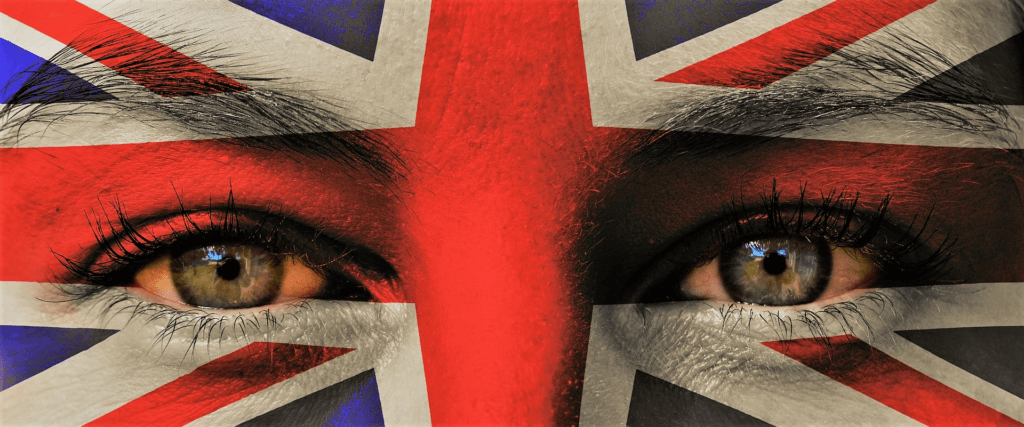
United Kingdom: History & Travel Guide
Once upon a time, a tiny island country was on the forgotten edge of Europe that few people had heard of. By some miracle, that small nation survived being swallowed by its larger neighbors and built the largest empire in the history of the world.
Today, the United Kingdom is once again a small country. But now, everyone has heard of it, and its language is the world’s most widely spoken second language.
The United Kingdom
When you visit the UK, you’re entering a living museum with countless exhibits detailing its long and rich history. This is the nation that defied the Spanish Armada, took the fight to Napoleon, and stood alone against Nazi Germany.
See where William Wallace fought for freedom, William Shakespeare performed his plays, and William Wilberforce campaigned to end slavery worldwide. It all began with William the Conqueror, and if you’re lucky, you might pass Prince William in the street today.
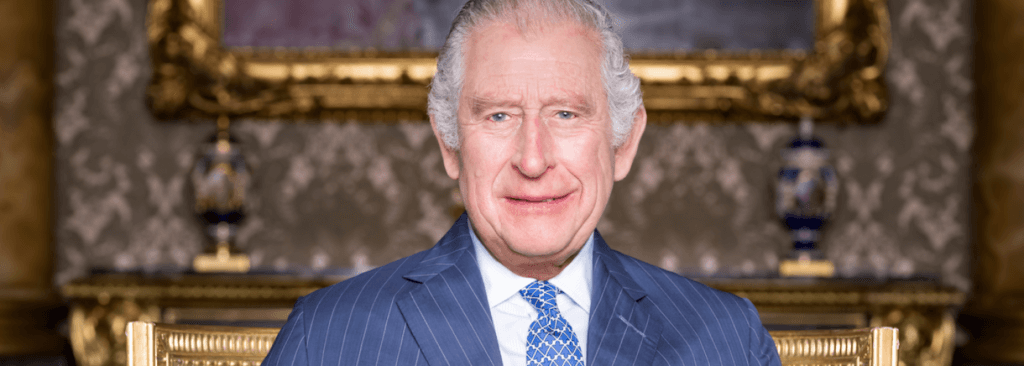
The Monarch
Current head of state and prime minister: His Majesty King Charles III is the head of state. He ascended to the throne following the passing of Queen Elizabeth II, the longest-serving head of state in the world. The current Prime Minister is Rishi Sunak, who leads the government.
United Kingdom Fact File
- Location: Off the northwestern coast of Europe.
- Capital city: London
- Population: Around 67,500,000.
- Ethnicity: 87.1% white, 7.0% “Asian” (ancestors from the Indian subcontinent), 3.0% black, 2.0% mixed-race, and 0.9% others.
- Area: 93,628 square miles.
- Seasonal weather: Temperate climate with lots of rain. The Atlantic Gulf Stream ensures mild winters.
- Official language: English.
- Other languages: Cornish, Irish, Scots, Scottish Gaelic, and Ulster Scots. In some areas, Welsh or Scottish Gaelic are the first languages spoken by the people, and official government forms are available in those languages. 16% of schoolchildren in Wales are taught in Welsh rather than English.
- Religion: 59.5% Christian, 25.7% atheist, 4.4% Muslim, 1.3% Hindu, 0.7% Sikh, 0.4% Jewish, 0.4% Buddhist, 0.4% other, 7.2% unknown. In some cities, the percentage of people following a minority religion is much higher. For example, you will find many beautiful mosques around Birmingham, Bradford, and Leicester.
- Time zone: The UK uses Greenwich Mean Time and British Summer Time, which means Brits turn the clock forward on the last Sunday in March and back on the last Sunday in October.
- Currency: The pound sterling (£) is the official currency. Since 1971, it has been decimalized, with the pound divided into 100 pence (p). Before decimalization, the currency was much more complex, with 20 shillings in every pound and 12 pennies in every shilling.
- Country dialing code prefix: +44
- Emergency numbers: In an emergency, dial 999. This puts you through to an operator who will ask you which emergency service you require. You can ask for police, ambulance, fire brigade, cave rescue, mountain rescue, or coastguard on this number. To contact the police over a matter that is not so urgent, dial 101. For a non-urgent medical matter, dial 111. I’ve heard that dialing 911 will also put you through to the 999 call center because American TV shows and movies influence British kids to think that 911 is the emergency number. But don’t risk your life on that!
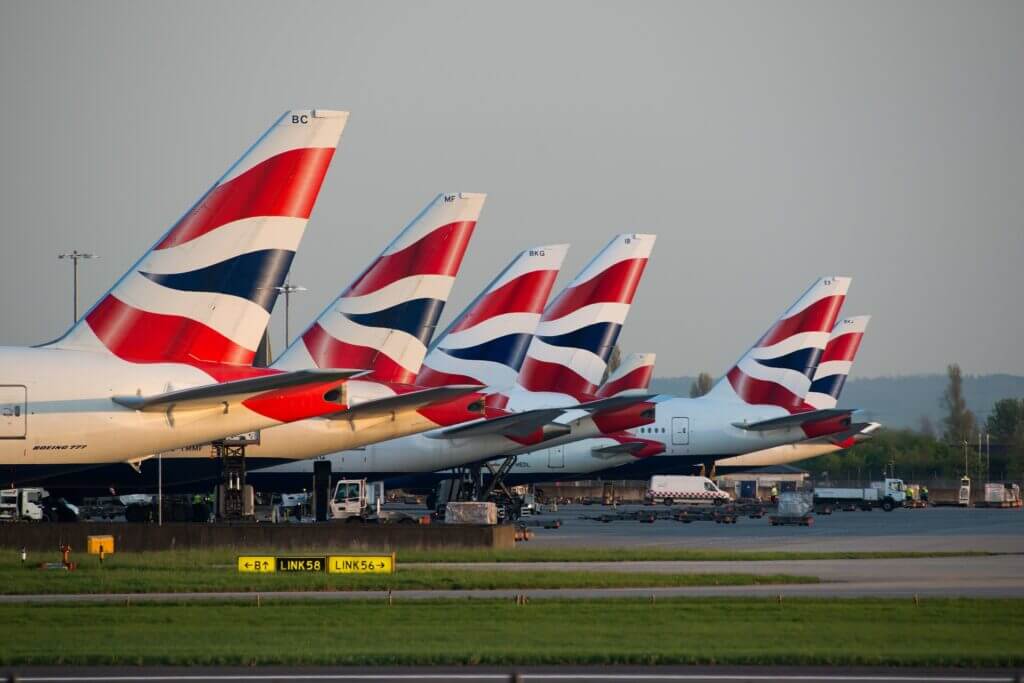
Airports & Entry
You can enter the UK by air, sea, or train. It’s often the quickest and cheapest way to travel by air because London Heathrow Airport is the busiest airport in the world, and you can pick up bargain flights from budget airlines.
However, it depends on where you’re coming from. For example, traveling from Paris to London, you may find a Eurostar train cheaper and just as convenient as flying. If you travel from the US or Canada, flying will work best.
Airports
Over 40 international airports in the UK are scattered all over the country, so you’re spoiled for choice. Before deciding on your destination airport, plan where you want to go.
Air flights are relatively cheap in the UK, but ground travel can be expensive. If, for example, you aim to spend all your time in Scotland, you’ll usually find it cheapest to fly to Edinburgh Airport and begin your Scottish tour there. If you fly to Heathrow Airport and take the train up to Scotland, it will cost you more money and valuable time.
However, for travelers who wish to tour around the country or see London, it works out cheapest to arrive at one of the busiest airports on a budget airline flight. I’d advise Heathrow for London and the south, Manchester Airport for the north of England, and Edinburgh Airport for Scotland.
Ports
Of course, Great Britain is an island. It can be reached by ferry from nearby European countries, especially the Netherlands and France.
The Port of Dover, the world’s 3rd busiest passenger port, is the main gateway to the UK by sea. It is only 21 miles from France, making the crossing here relatively fast and cheap—1½ hours and only £50 for a single adult on foot. However, you must also factor in the cost of getting to Calais from wherever you came from in France and getting from Dover to your destination in the UK.
Train
Using the Channel Tunnel, you can take a Eurostar passenger train from London to Paris or a Eurotunnel Shuttle from Cheriton (near Dover) to Coquelles (near Calais) if you take a vehicle.
You can ride on the Eurostar for as little as £58.50 (though it depends upon when you travel and can cost up to £102), and it takes 2 hours and 17 minutes from Paris to London. As you can probably work out for yourself, it’s usually quicker and cheaper to take the Eurostar from Paris to London than to take the ferry combined with road or rail from the ports to the cities.
You can fly from Paris to London Stansted Airport for as little as £87 on EasyJet; the flight takes 1 hour 20 minutes. But Stansted is almost as far from central London as Dover, so you have to factor in travel and time costs from the airport. Heathrow is closer but still not central. Overall, it’s less hassle and usually the cheapest way to get the Eurostar.
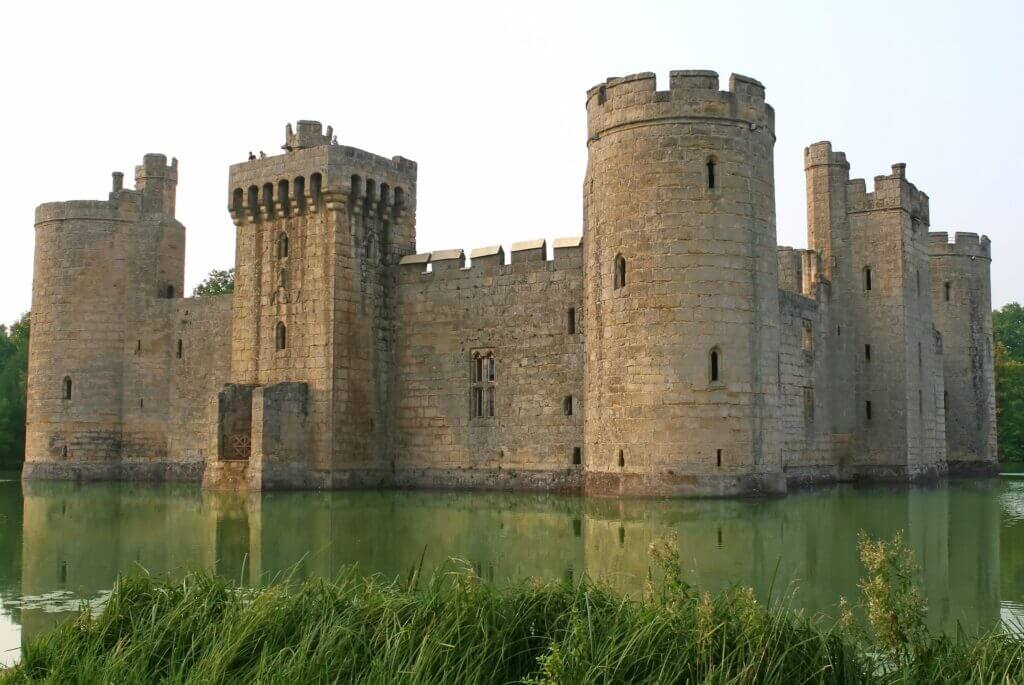
History Of The United Kingdom
The UK has a complex history due to the multiple waves of invaders who have each transformed the British Isles, introducing fresh blood, cultural influences, and new languages.
The current political union of England, Scotland, Wales, and Northern Ireland was only formed in 1801 (Eire seceded in 1922). However, the British people’s cultural history stretches back much further.
The earliest evidence of humans in the UK is stone tools and footprints dated to 900,000 BCE. At that time, Great Britain was joined to France and was not an island. Around 425,000 BCE, the land link flooded, and Great Britain became an island.
Roman Invasion
By the time of the Roman invasion in 43 CE, the British Isles were inhabited by Celtic people closely related to those in Gaul (Belgium and France). Great Britain was part of the Roman Empire from 43 CE to 410 CE. During this period, some Romans and Celts blended to create a Romano-Celtic culture in Britain.
The Romans founded many important cities, such as London and York. They also built important road networks that have survived into the modern age and introduced weights and measures that remained in use until the late 20th century. Oh, and they also told us to drive on the left side of the road, and we never stopped!
Dark Ages
A period of chaos was often termed the Dark Ages between 410 CE and 1066 CE. Multiple invasions and the mass immigration of Saxons from northern Germany and Vikings from Norway and Denmark led to many tiny kingdoms throughout Britain. For example, the Viking Kingdom of Jorvic was formed around York, where York gained its current name.
Most significantly, a cultural split appeared between England and the rest of the British Isles, where Celtic-speaking people were marginalized into Ireland, Wales, and Scotland. England became culturally and linguistically more Saxon and spoke a Germanic language called Anglo-Saxon or Old English. English people have more Saxon and Viking blood, while Welsh and Irish people are more Celtic.
In 1066, William the Conqueror conducted the last successful invasion of England. Many iconic castles nationwide, such as the Tower of London and Windsor Castle, were originally built by William and his Norman knights, though they have been rebuilt many times since.
Under William and his descendants, Norman French became the official language of the court and law. The upper classes learned French, while the lower classes continued to speak Anglo-Saxon. Over some 400 years, many French words were added to the Anglo-Saxon language spoken by commoners, and a new hybrid language, Middle English, was developed.
English Renaissance
Many of the most popular stories in British history come from the English Renaissance in the 16th and 17th centuries. This is when modern English emerged and overtook French as England’s court and law language. It is also when Queen Elizabeth I defied Spain, and England transformed into a major world power with colonies in America.
The English Renaissance also saw James VI of Scotland, who became King of England in 1603, merge the crowns of England, Ireland, and Scotland into one. Although Scotland and England remained sovereign states, one monarch ruled both from 1603, setting the foundation for what eventually became the United Kingdom.
Industrial Revolution
However, economically, the Industrial Revolution was the most important period of British history. Due to various timely technological inventions by a few British individuals, the United Kingdom grew into the world’s main commercial nation by the mid-18th century. It expanded its empire until it became the largest in the world (for an extremely brief period). This led to English (originally a backwater dialect of German) becoming one of the most widely spoken languages in the world.
The modern United Kingdom and its people reflect this complex history. Walking the streets of every major city, you see evidence of its faded empire. In the parks, you see faces and clothes originating from the Indian subcontinent, though their accents betray the fact these people were born in Glasgow or Birmingham. In city centers stand grand, neo-classical buildings nobody in the United Kingdom could afford to build today. Many museums hold treasures stolen from other nations that may have to be returned someday.
The UK today is multicultural on every level. 36.7% of the people in London were born in another country, and in many cities, the elected leaders of local government come from immigrant communities. The UK is one of the most fascinating countries you will ever visit.
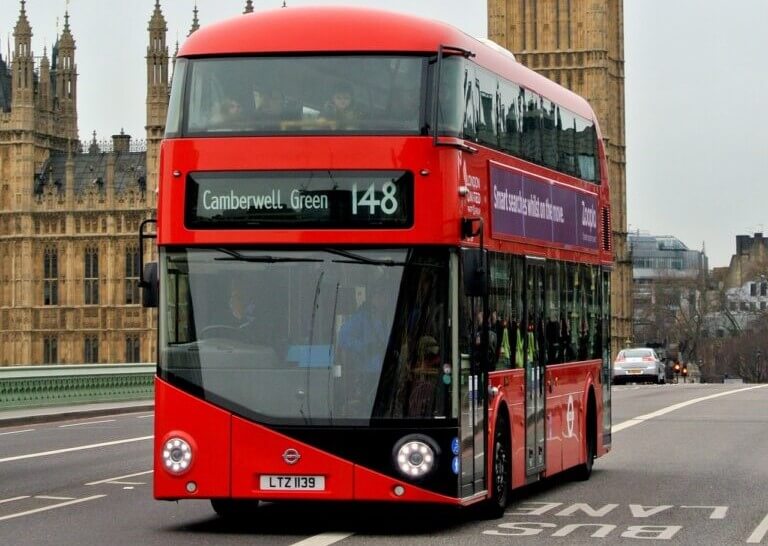
Getting Around The United Kingdom
The UK has a very developed transport system. Generally, I’d say it’s easiest to get around by train because trains are faster than road transport, and you can often buy discount tickets if you plan ahead.
Trains
Trains are great for traveling from one city to another. They’re relatively fast; you can read and research your next destination while moving. However, they do tend to be expensive. In particular, if you’re traveling as a family or in a group of four or five, it will almost always work out cheaper to hire a car rather than buy individual rail tickets.
Never purchase your tickets from the railway station just before you travel. Many online train ticket companies, like Northern Rail, show you the range of prices available for the journey you intend to make so that you can choose the cheapest option.
The rail fare is often dramatically different at different times during the day. For example, the fare from London Kings Cross to York at 8.00 a.m. is £70.00, but at 8.06 a.m., it’s £54.00. However, you can only secure this cheaper ticket by booking in advance online.
Buses
Coach companies run efficient and affordable intercity services, such as National Express. A National Express coach journey from London to York will only cost £37.20. However, the train journey takes less than 2 hours. The coach journey from London Victoria Coach Station to York takes 8 hours 22 minutes and involves a change.
You can take a coach if you’re a student and have all the time in the world. But if you work all year and you’ve taken two weeks off for your dream vacation in England, don’t waste those 6 extra hours on a coach to save £17. Plus, although National Express coaches have restrooms and comfy seats, they’re not as spacious and comfy as a train.
Cars
Note that we still drive on the left in the UK like the Romans did. If you’re uncomfortable with that and going clockwise around our many roundabouts, then hiring a car isn’t for you.
I would NEVER recommend a car for journeys around London. You’ll be stuck in traffic for hours and have more chance of winning the National Lottery than finding a parking place.
The London Congestion Charge aims to reduce traffic and pollution in central London. Drivers must pay approximately £15 daily if driving within the zone during charge times. Failure to pay can result in a £160 fine, reduced to £80 if paid promptly. Enforcement is managed through a network of cameras.
London is Best by Tube
Navigating London is most efficiently done via the Tube. Purchasing an Oyster card, which can be topped up as needed, allows seamless travel across various transport services. Alternatively, you can buy a 1-day Travelcard for £13.50, covering travel in Zone 1-4, ideal for accessing central London’s major attractions.
For family travel around the country, renting a car might be cost-effective. A typical 5-person vehicle costs about £70 per day. For example, a road trip from London to York would cost £70 in rental fees plus £35 for fuel, totaling £105, or about £26.25 per person.
However, driving is slower than train travel. The car journey to York takes about 4 hours, compared to 2 hours by train. Therefore, if time is limited, consider renting a car only for visiting scenic and remote areas like the Yorkshire Dales or the Peak District. For city visits, trains offer a quicker, stress-free alternative.
Bicycles
Bicycles are a contentious issue. Many cities in the UK have spent millions developing cycle lanes. However, I would never recommend cycling in some cities, like Manchester or Nottingham. In others, like Cambridge and Oxford, you’ll find it quicker to cycle than drive around the city because there are many areas where cars are forbidden but cycles are allowed, and many residents choose to cycle.
In the center of London, you can easily hire a Boris Bike for as little as £2.00. You can find these cycles, officially called Santander Cycles, at docking stations around London. You touch the bicycle’s screen, use your bank card to hire one, and drop it off at another docking station when finished.
The costofohiringe a Santander Cycle in London has been updated. It costs £1.65 to hire a bike for up to 30 minutes. For longer journeys, each additional 30-minute period costs an extra £1.65. These bikes are available across the city and can be rented from numerous docking stations, making them a convenient option for quick trips around London.
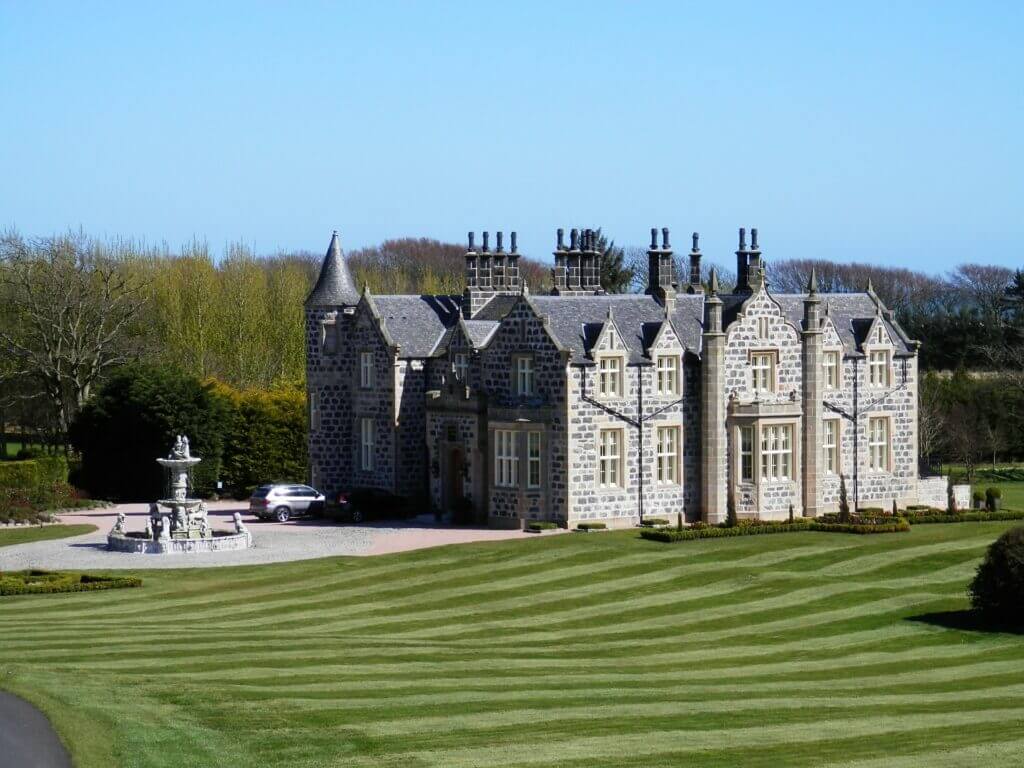
Accommodation In The United Kingdom
The most common chain hotels in the UK are Premier Inn, Travelodge, Holiday Inn, Hilton, Marriott, Butlins, Best Western, Ritz, Savoy, and Haven. Most are famous international brands so that you may have stayed in similar hotels in your country. You will find them in all the major cities.
Of course, there are very prestigious hotels that are not owned by international companies or, at least, have a long and illustrious history. However, these can be expensive. For example, a night at the luxurious London Ritz, a 5-star hotel, will cost around £570.
Bed & Breakfasts
Bed & breakfasts are an English tradition, and you can easily learn about local B&Bs from any tourist information office. Most B&Bs advertise on booking.com, AirBnB, or similar online organizations. B&B prices vary wildly depending upon location and the standard of accommodation.
For example, you can stay at the Acorn Guest House in Cambridge for £75 per night and the Rosebud Cottage in Haworth for £65, but Flynn’s Guesthouse in Hackney, London, will cost you £120 if you don’t mind the noise of the busy pub below.
If you’re young and traveling on a budget, hundreds of long-established hostels are around the UK. The YMCA runs some, but others are independent. For example, the Fort Boutique Hostel in York boasts beds for as little as £10 per night if you don’t mind an 8-person shared dorm.
Visitors staying in one place for a week can always book an apartment on Airbnb and self-cater to keep their food costs low.
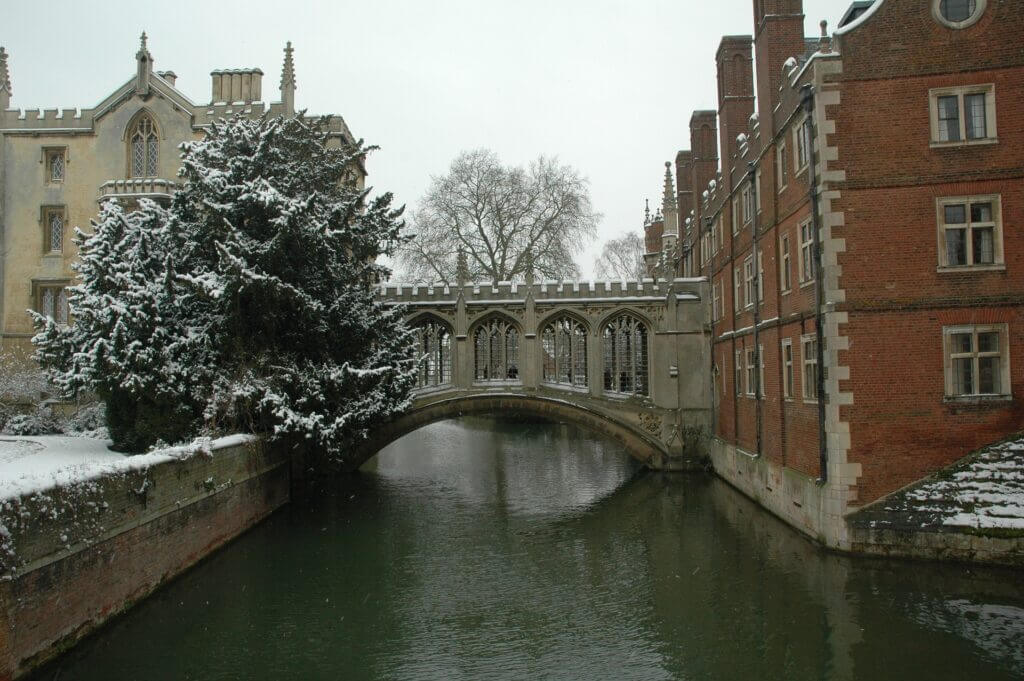
Top 5 Cities To Visit In The United Kingdom
This is a subjective list. Other people may choose other cities, but these are my 5 favorites if you want to see an eclectic mixture of attractions around the country.
Cambridge
You could visit Oxford or Cambridge for similar sights, but my favorite university town is Cambridge because it offers better river views. Either hire your punt or take a guided tour along the River Cam for a unique experience. Then, wander around the colleges and university buildings to see where the atom was first split and DNA was first unraveled.
Perhaps you can also wander around the amazing exhibition of impressionist paintings in the Fitzwilliam Museum.
Edinburgh
The capital city of Scotland is home to the Scottish crown jewels (on display in Edinburgh Castle) and the Royal Mile. This historic street links the old castle to Holyrood Palace, the Queen’s official Scottish home. You’ll find the Scottish Parliament Building near the palace, where the devolved Scottish Parliament sits to govern Scotland. Edinburgh is home to several popular annual festivals, including the Edinburgh Festival, the Edinburgh Fringe, and the Edinburgh Military Tattoo, held between July and September.
Liverpool
Much of Great Britain’s wealth before the Industrial Revolution came from its nefarious role in the international slave trade. Liverpool’s elite grew wealthy on the back of this trade, making it the most important port in the United Kingdom. Visit the historic Royal Albert Docks, a UNESCO World Heritage Site. However, today, Liverpool is better known as an important center for the arts. The city has more art galleries and museums than any other city in the nation except London. It’s where you’ll find the Tate Liverpool Museum of Modern Art and The Beatles Story Museum arguably the world’s most famous rock band.
Portsmouth
Without naval supremacy, Britain would never have built an empire. Portsmouth lies at the heart of Britain’s naval history and modern navy. It’s home to two-thirds of the Royal Navy’s current fleet and a collection of important historic ships, including the Tudor warship Mary Rose and the Napoleonic Wars flagship HMS Victory. Portsmouth is an incredible island fortress that any military or history enthusiast will love to explore.
York
York was founded by the Romans as Eboracum in 71 CE and is where Constantine the Great was declared Emperor of Rome in 306 CE. The Vikings later settled here and called it Jorvik, which was shortened to York over the passage of years. Today, it’s a great place to explore 2,000 years of British history. You can view Roman foundations beneath the Minster, the Viking settlement at the Jorvik Viking Center, the medieval York Minster, and one of England’s best-preserved medieval streets—the Shambles.
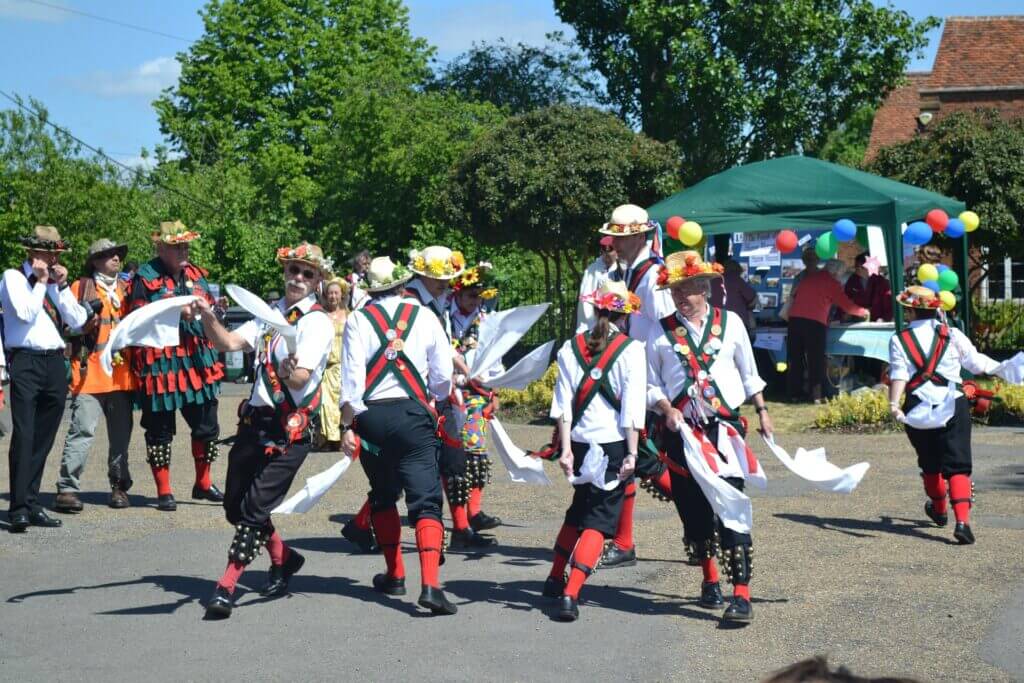
Top 5 Unique Activities In The United Kingdom
Because the United Kingdom has exported much of its culture to other nations (sandwiches, golf, the English language, etc.), most British traditional activities are echoed in other nations worldwide. However, here are a few that may not have crossed the Atlantic.
Pantomime
These traditional musical comedies are performed in theatres throughout the United Kingdom around Christmas every year. In larger cities, the actors involved are often major celebrities from TV shows. In these shows, cross-dressing is the norm, and comedy is the aim. Watch out for cringe-worthy rhymes, puns, and political swipes in shows like Puss In Boots or Cinderella.
Burn’s Night
If you’re in Scotland around the 25th of January, see if you can attend a Burn’s Night Supper. This is when Scottish people gather to eat haggis, drink whiskey, and recite Rabbie Burn’s famous poetry. You may remember him as the author of Auld Lang Syne, the traditional New Year’s poem. Burn’s Night is celebrated on Robert Burn’s birthday to celebrate his life and memorable poetry.
Pancake Day
On Shrove Tuesday, the last day before Lent, British people traditionally celebrate their last day of rich food by eating pancakes. Many side traditions are associated with this day, including Pancake Races. Compete against other cooks to fry your pancake, then run down the street in fancy dress to deliver your pancake, still in the frying pan, to your hungry guests before the other cooks get there.
Guy Fawkes Night
This is a rather morbid tradition of burning the effigy of a traitor on a bonfire on the night of 5th November. Guy Fawkes was one of a group of terrorists (or heroes, depending upon your view) who plotted to blow up the King and Parliament in 1605. In the run-up to Bonfire Night, British children make and dress the effigies of Guy Fawkes and display them on street corners, asking passersby to give “A penny for the Guy”. These “pennies” are used to buy fireworks traditionally fired on the same night.
Morris Dancing
In small villages around the country, you’ll see small groups of men wearing strange, dated clothing covered in bells, flowers, and ribbons performing traditional folk dances on festival days. Nobody can remember where or when this tradition began, but it still thrives today. Morris Dancers usually perform in single-gender groups following age-old dance steps.
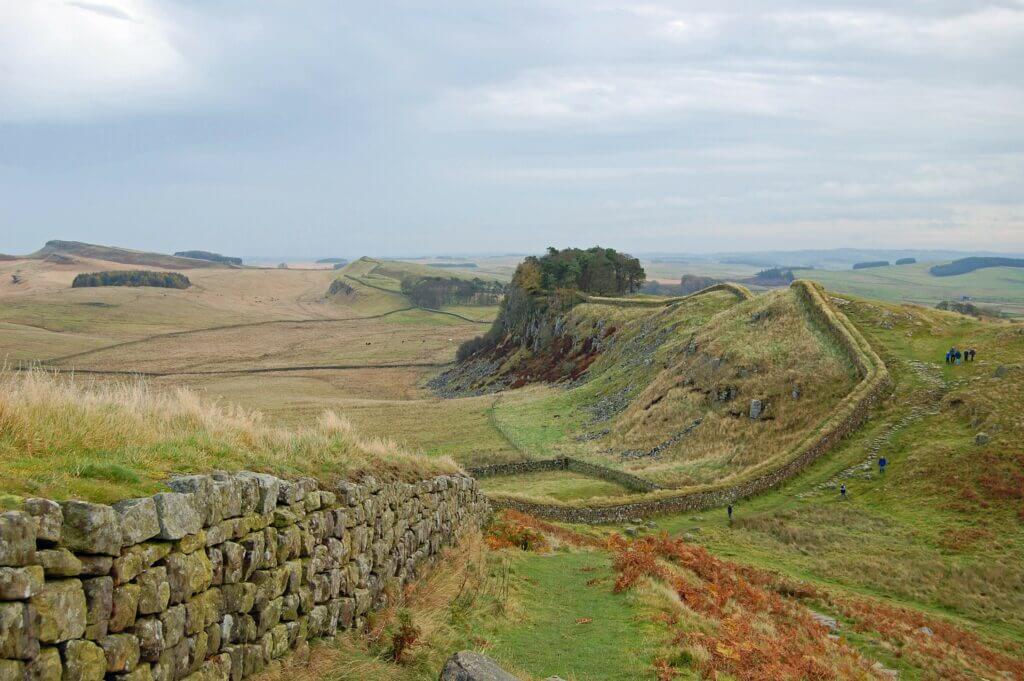
Top 5 Outdoor Recreational Activities In The United Kingdom
British people love to explore the outdoors and get involved in activities in the wilderness. Many private or government organizations are dedicated to helping you enjoy the British countryside. Here’s a selection of enjoyable activities you could try.
Rambling
UK people love to go on long walks along established trails. It’s hiking and backpacking, but we call it rambling. There are countless long trails you can explore around the nation. My favorite is the Hadrian’s Wall Path, a coast-to-coast trail that follows the famous Roman wall dividing England from Scotland.
Scuba Diving
Although there are many places you can enjoy scuba diving around the UK, the best location is Scapa Flow. At the end of WWI, the German naval fleet was scuttled here. Now, exploring the wrecks is one of the world’s top scuba diving experiences.
Sea Swimming
Because Great Britain is an island nation, swimming is important in schools. There are also many traditional, organized swimming events. Two of the most challenging endurance events are the Menai Straits Race and swimming in the English Channel. The Menai straights separate the island of Anglesey from Wales, and the annual race crosses a mile of seawater. It is 21 miles from Dover to Calais, but hundreds make this epic swim every year with help from the Channel Swimming Association.
Marathons
Most major cities in the UK hold an annual marathon, and running a marathon has become the aspiration of many middle-aged joggers around the country. If you want to combine running a marathon with exploring a historic area, consider entering the Rotary Shakespeare Marathon. The route crosses miles of beautiful countryside through Warwickshire villages and Stratford-upon-Avon.
Cycling
Cycling is a great way to explore the countryside around the UK. In recent years, the government has invested much money into transforming disused railway lines into bicycle paths so that cyclists can journey from town to town without fighting vehicular traffic or breathing in toxic fumes. Now, the UK has an established National Cycle Network composed of specific National Cycle Routes. For example, you can explore the beautiful countryside of the West Country by cycling along National Cycle Route 3 from Bristol to Land’s End.
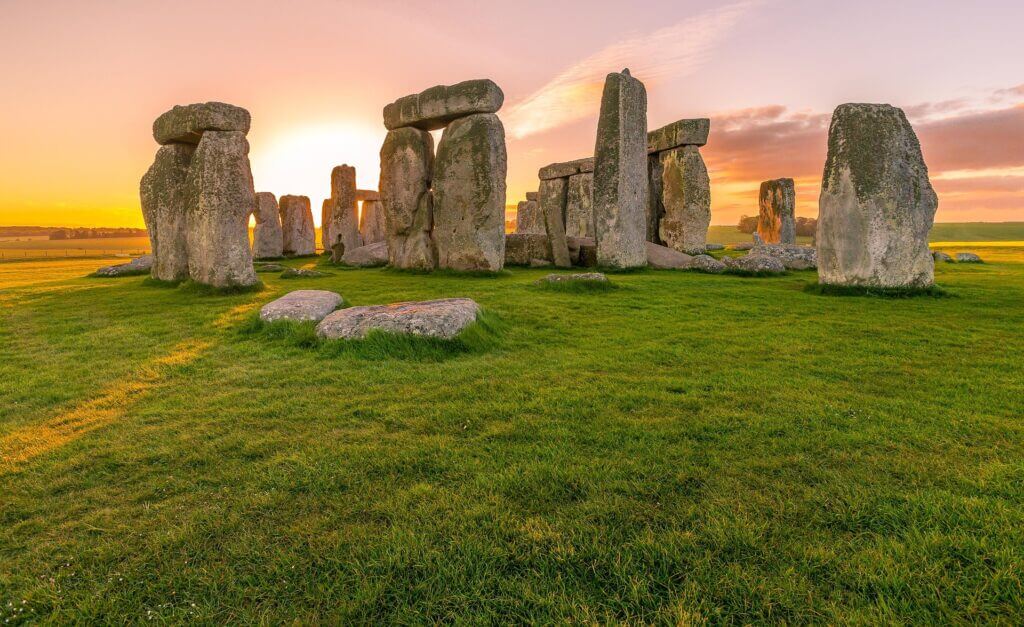
Top 5 Day Trips In The United Kingdom
In the land of Byron, Shelley, and Wordsworth, it’s difficult to identify just five-day trips that capture the wealth of culture and natural beauty around the UK. However, here are five I think you’ll love.
The Giant’s Causeway
This is a natural structure of basalt columns found in County Antrim, Northern Ireland. According to local legend, the Giant’s Causeway is part of a paved road a giant built between Ireland and Scotland. However, geologists claim it was formed by an ancient lava flow 50 million years ago. Whichever story you believe, the scenery here is spectacular.
Stonehenge & Avebury
Around the world, there are many examples of prehistoric stone circles and monuments. However, the small county of Wiltshire in the south of England contains more than its fair share. Arguably, the most famous standing circle in the world is Stonehenge. With a history dating back to around 3100 BCE, this iconic stone circle is one of the oldest monuments in the UK and shows evidence of continuous use lasting thousands of years. However, the nearby Avebury stone circle is the largest megalithic stone circle in the world, surrounding the village of Avebury.
Haworth Village & the Brontë Parsonage
England boasts many historic and scenic locations with literary connections, but none is as unique as the Brontë Parsonage Museum and surrounding Yorkshire moors. Five members of this nuclear family successfully published poetry, pamphlets, and books: Reverend Patrick Brontë, his daughters Charlotte, Emily, and Anne, and his infamous son Branwell Patrick Brontë. Their home near Bradford, West Yorkshire, is now a museum full of their childhood notes and drawings, and the surrounding moors are dotted with trails to scenic locations featured in their famous novels.
The National Railway Museum
I consider this the best Industrial Revolution museum in the UK. The museum is renowned for its extensive collection of railway memorabilia, including replicas of the earliest steam trains and original steam engines from the Golden Age of Steam.
Key exhibits include a range of royal carriages from Queen Victoria’s to Queen Elizabeth II’s time and the Mallard, which is the world’s fastest steam locomotive. This museum offers a comprehensive look at the history and evolution of rail transport in Britain, appealing to enthusiasts and families with its mix of scholarly displays and interactive attractions.
Alton Towers
Found in Staffordshire, Alton Towers is one of the UK’s largest and most popular theme parks. If you’re visiting with kids, this is a great place to take them for a day off from all the culture and history they’ve been absorbing elsewhere. There are over 40 major rides to enjoy, from those aimed at thrill-seekers to those you’ll be happy to let your little ones ride. It’s open from March through November, and you can easily explore the park all day.
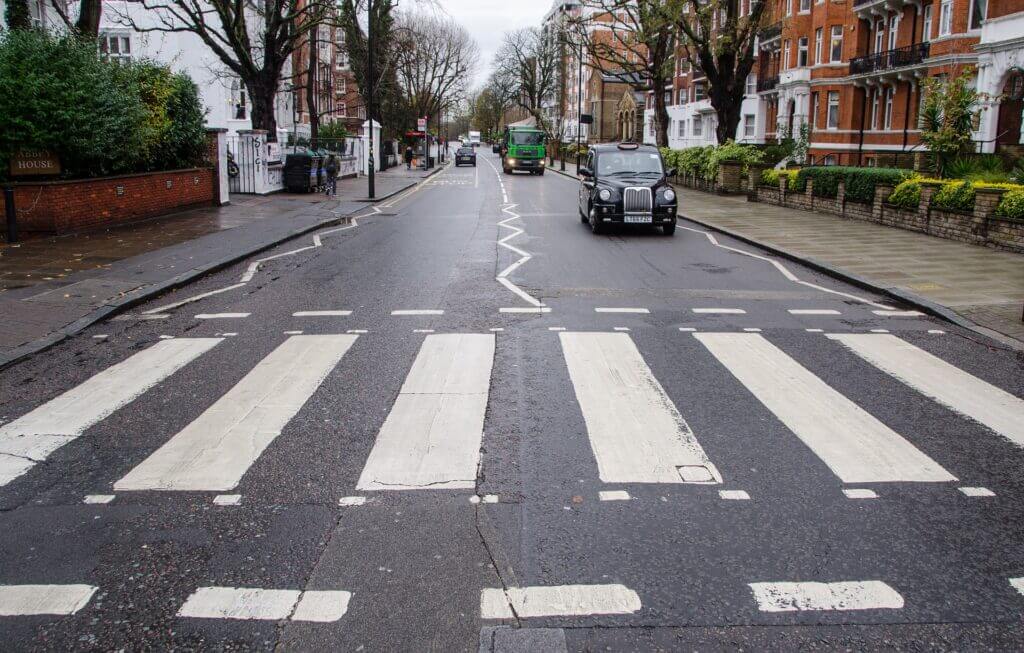
Visiting The United Kingdom Safely
The UK is generally considered a safe country. Violent crime, especially involving guns, is relatively rare. However, you can always be proactive during your visit to ensure your safety.
- When you travel or go out on trips, let a friend know where you are going and arrange to report in on arrival and departure.
- Remember that vehicles drive on the left when you’re crossing the road.
- Where possible, use marked public crossings.
- Avoid wearing headphones that reduce your situational awareness.
- Don’t walk alone at night, and avoid dark alleyways.
- Only use licensed taxis.
- In bars, never accept drinks from strangers.
- Keep your bag and other property in sight or a secure locker.
- Don’t carry too much cash (you can pay by card in most businesses).
- When paying or using an ATM, stay aware of your surroundings and cover your hand while inputting your PIN.
- Keep your phone and other valuables out of sight.
- Keep a record of your card numbers and bank emergency numbers and store that record separately from your cards.
- If you see unattended bags in a public place, report them immediately.
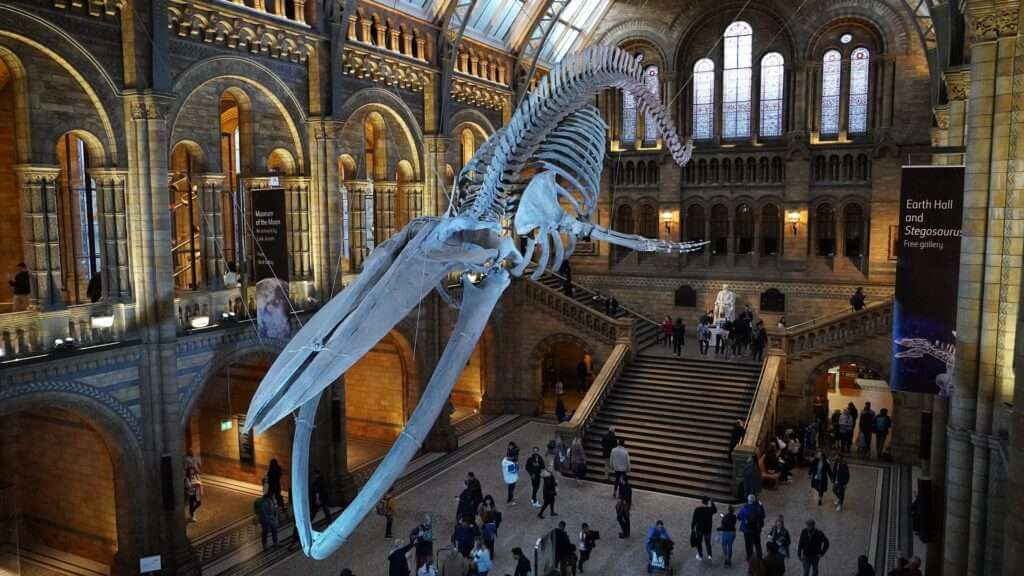
What I Love About The United Kingdom
I love my country’s multiculturalism, rich history, and culture. I love that I can walk into a mall and buy a Qur’an or a Bible, American ice cream or Cornish cream, Californian wine, or Scottish whiskey. I love the juxtaposition of Tudor timber-framed mansions and 1960s high-rises. I love the many museums where I can learn about anything from Paleolithic stone tools to American space capsules. I hope that you love my country, too!
Harry Potter Things to Do in London
Warner Bros. Studio Tour – The Making of Harry Potter
A visit to the Warner Bros. Studio Tour in Leavesden is necessary for any Harry Potter fan. Located just outside London, this tour allows you to step onto authentic sets, discover the magic behind the special effects, and explore the world of Harry Potter.
Platform 9 ¾ at King’s Cross Station
Head to King’s Cross Station to see the famous Platform 9 ¾. Here, you can take a photo with the luggage trolley that appears to disappear into the wall. Don’t forget to visit the Harry Potter shop nearby for some magical souvenirs.
Harry Potter Walking Tour
Join a Harry Potter walking tour to explore various filming locations in London. These tours often include stops at the Millennium Bridge, Leadenhall Market (Diagon Alley), and the entrance to the Ministry of Magic.
House of MinaLima
Visit the House of MinaLima in Soho, the graphic design duo responsible for the visual aesthetic of the Harry Potter films. This gallery and shop display original artworks and prints from the films, providing a unique insight into the design process.
Harry Potter and the Cursed Child
For theatre lovers, watching “Harry Potter and the Cursed Child” at the Palace Theatre is a magical experience. This award-winning play continues the story of Harry Potter, and its stunning special effects make it a must-see for fans.
The United Kingdom
The United Kingdom offers a rich tapestry of history, culture, and modern attractions. From exploring the ancient streets of York to enjoying a day at Alton Towers, there’s something for everyone. Don’t miss the Harry Potter-themed activities in London for a touch of magic on your trip. Enjoy your visit to this fascinating and diverse country!




